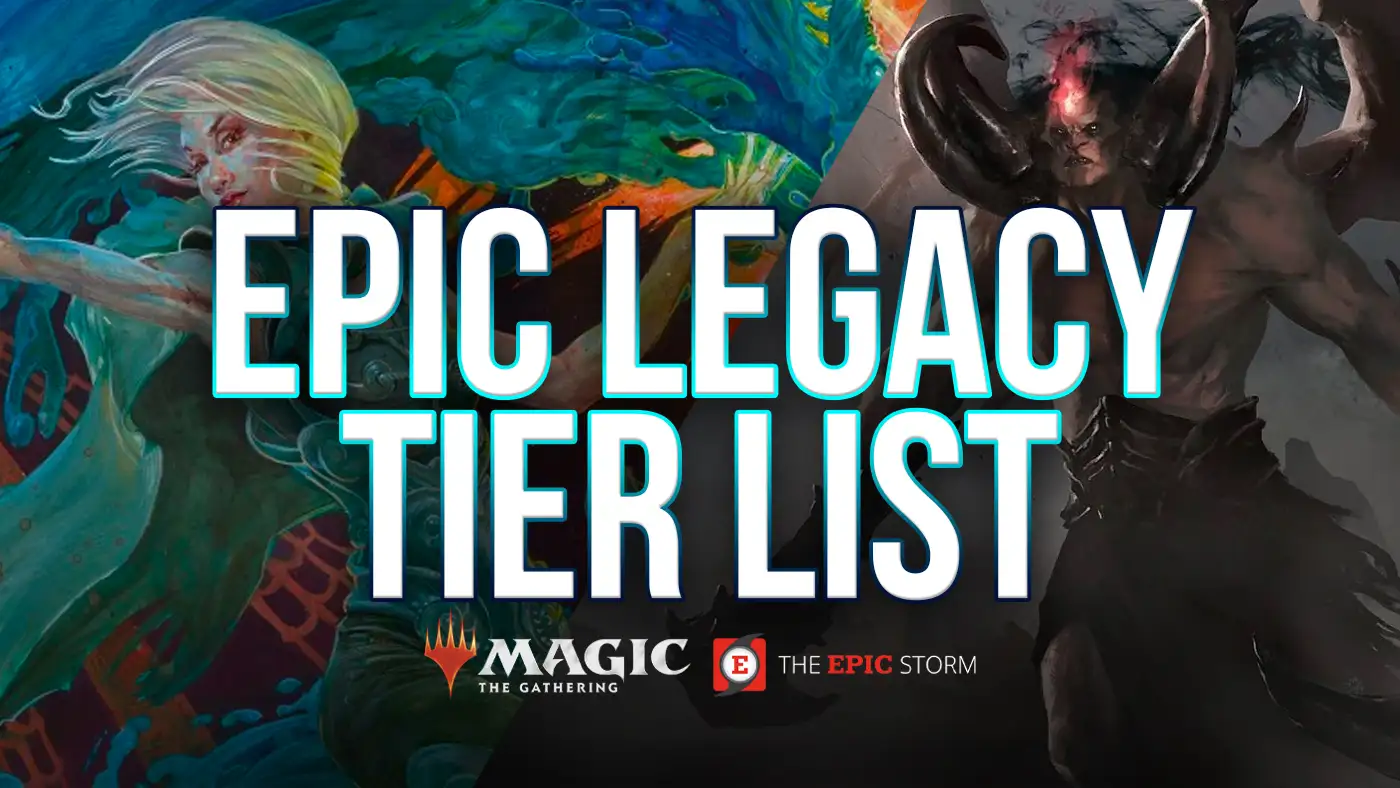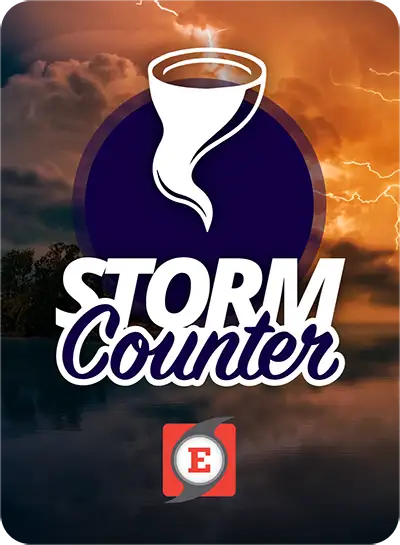With the Legacy Showcase coming this weekend on Sunday, October 22nd, 2023, understanding the metagame is critical. This is the part of an approximately quarterly tier list article series.
Methodology
Everyone builds a tier list differently. I have chosen to build mine based on MTGO Challenge results (as collected by Joe Dyer and the Legacy Data Collection Discord). A data-driven approach helps inform the feelings that I have based on my experiences playing decks and playing against decks in multiple settings. For this tier list, I am looking at all of the data since the release of Lord of the Rings: Tales of Middle Earth. The best way to use a tier list is to help choose what deck to play or how to tune a deck to beat a metagame. The decks I will be ranking are among the most played in the format, and I will not be ranking every Legacy deck ever played. There just is not enough space for all of the decks. Ranking decks within tiers is too close to splitting hairs. Within a tier, decks will simply be alphabetized.
S Tier
A deck that will consistently place one or more copies in a challenge top 8. Normally these decks reach the threshold to be “bannable”. They have strong win rates and play rates. Additionally, players will always consider warping their sideboard, main deck, or even archetype selection based on these decks. An S-tier deck has almost no very bad matchups and few bad matchups among commonly played decks in the format. If you are not playing one of these decks, you are either wrong or have a very good reason to not play the deck.
A Tier
Decks that consistently has a copy in the top 8 of a challenge. It probably will not top 8 every challenge either, but should be in most. An A-tier deck is a strong force in a metagame, but not overwhelming. These decks have weaknesses, though bad matchups tend to have lower play rates. Choosing one of these decks for a tournament is almost certainly a good place to be.
B Tier
Strategies that will not make most challenge top 8s either due to low power level or lower play rate. A B-tier deck making a top 8 would not be shocking, but you would expect zero copies in most top 8s. These decks maintain an exceptional win rate against some higher tier decks, but lower against other decks. To choose to play a B-tier deck in a tournament is to put yourself at a disadvantage and be willing to play a specific metagame read.
C Tier
Often specialist decks that will rarely make top 8s and only then in the hands of archetype masters. Generally, good players of these decks grind them often and eventually get enough wins to top 8, but seeing any of these decks in the top 8 is a surprise. The play rate of a C-tier deck is generally in the one to two players per event space. While they have some good matchups, there are likely format pressures keeping them from being higher tier or the strategy might be inherently weak.
D Tier
Archetypes that are just underpowered or rarely played. It is sometimes surprising to see these decks registered in any amount in a challenge.
The Tier List
S Tier
No Decks
B Tier
C Tier
The Metagame
It has been two major set releases since the last tier list was released here. Originally, we had intended to release one earlier, but there were too many topics to cover! Both Lord of the Rings: Tales of Middle Earth and Wilds of Eldraine have had major impacts on Legacy. If you are planning on playing the Showcase Challenge this weekend or Eternal Weekend in December, the most important trend to know is that fair black decks are back. [[Orcish Bowmasters]] was a perfect, powerful two drop for black tempo shells and prison shells. Grixis Delver is back at the top of the metagame, being both the most played deck and still maintaining a 54 percent win rate. Unlike other Legacy meta games, Delver is not the only tempo shell that sees play! Death’s Shadow, a deck already on the rise, was looking for another threat and [[Orcish Bowmasters]] helps solidify it as a solid A Tier deck. This is backed up with the combination of [[Reanimate]] and [[Grief]], porting the Modern “Scam” idea to Legacy. These concepts were also adopted by Black Stompy. With Wilds of Eldraine, Black Stompy gained incredible consistency from [[Beseech the Mirror]] to enable the [[Leyline of the Void]] + [[Helm of Obedience]] combo as well as finding their lock pieces more consistently.
[[Up the Beanstalk]] was a surprise playable from Wilds of Eldraine. Finding a home in green control decks, it offers them another avenue of card advantage that is not [[The One Ring]] or [[Uro, Titan of Nature’s Wrath]]. I think these decks are quite good, though not in their final form. Legacy has been changing a lot between that last few sets so finding a control deck to exactly fight a metagame has been a tough challenge. These Four Color Control Decks have about a 51 percent win rate, which has been increasing as the metagame solidifies and there are more obvious ways to combat the fair black decks from a control seat.
Lord of the Rings: Tales of Middle Earth‘s [[Forth Eorlingas!]] also revived the Boros Initiative deck. Having more multicolor cards in the deck helps its mana issues by turning [[Chrome Mox]] into a more useful mana source and opening up both [[Solitude]] and [[Fury]] as playable options. These are the main tools that put it ahead of the more traditional Moon Stompy deck. [[Forth Eorlingas!]] is not just a prison card. Both Four Color Control and Jeskai have picked this card up as a finisher option as well as a way to gain card advantage in the mid game. Both decks typically play some number of [[Mystic Sanctuary]], making this a win condition that is easy to rebuy from the graveyard.
Overplayed & Underplayed
Overplayed
Reanimator — Despite being the third most played deck in the format, it sports a 45 percent win rate. I do think the deck is powerful, but it is not as easy as many make it out to be. Good Reanimator players should probably still be playing it, but it is not quite the pick up and play deck that most make it out to be.
Jeskai Control — While some dream of a day of when Miracles was the best way to play control, green is the correct color to splash now. [[Up the Beanstalk]] and [[Uro, Titan of Nature’s Wrath]] are just overpowering and the winrates reflect this. Jeskai and Four Color Control have about the same playrate, but Jeskai has a 46 percent win rate in challenges. It is working harder to do the same thing as the Four Color Decks.
Underplayed
8-Cast — Before Lord of the Rings, 8-Cast was probably the best deck in the format. Many thought that [[Orcish Bowmasters]] would be the end of the deck, but it still wins a lot of games. I do not think it is as dead as people made it out to be now that it has adapted.
Dredge — MahfuzVanGogh has been top 8’ing challenges left and right with [[Force of Will]] Dredge and some other users have started to copy the deck and put up results. I’m not sure if there is enough data to call the deck into the best in Legacy, but it is something that should be seeing more play.
Selesnya Depths — This deck still has a 56 percent win rate. I’m not entirely sure why, but the numbers point to something interesting.
Storm Decks
[[Beseech the Mirror]] has fundamentally changed all of the Storm decks. Decks that can not produce have simply dropped out of the metagame because [[Beseech the Mirror]] requires so many fewer resources. ANT, TES, and Black Saga Storm (BSS) have all started building around it and got a power bump. The biggest problem to solve for these decks is what to do when there is graveyard hate. [[Leyline of the Void]] and [[Dauthi Voidwalker]] are common main deck cards in multiple archetypes. Being able to beat these cards even game one is more important than ever. BSS has the inbuilt option of winning with combat damage through [[Urza’s Saga]]. ANT is still using [[Ad Nauseam]], making it the most all in on [[Gaea’s Will]] as the main engine. TES is able to play [[Burning Wish]] for a variety of pivots, but recently we have picked up [[Song of Creation]] to give [[Beseech the Mirror]] a pivot in the main deck. Storm being perceived as good has caused all of the sideboard cards to come out in force. However, [[Tendrils of Agony]] decks have not put up the numbers in challenges to really justify the hate. Perhaps it is just the players playing leagues with overloaded sideboards, but [[Beseech the Mirror]], while powerful, did not solve any fundamental problems for storm.
Rating my Rating
Disagree with this tier list? Let me know on Twitter, Discord, or the comments of wherever you found this article! If you wanted early access to this article, check out The EPIC Storm Patreon and support us there.










